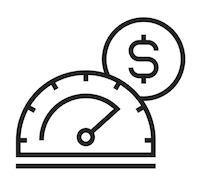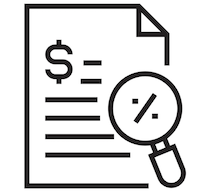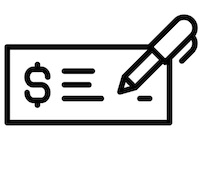Today’s 30-year mortgage rates start at % (% APR), according to The Mortgage Reports’ daily rate survey.
However, your own interest rate could be higher or lower than average.
Actual rates are based on your credit score, down payment, loan type, and other factors. So it’s important to compare options and find the lowest rate for your situation.
Check your 30-year mortgage rates30-year fixed mortgage rates for December 13, 2025
| Program | Mortgage Rate | APR* | Change |
|---|---|---|---|
| Conventional 30-year fixed | |||
| Conventional 30-year fixed | 6.285% | 6.35% | +0.02 |
| 30-year fixed FHA | |||
| 30-year fixed FHA | 6.083% | 6.134% | +0.11 |
| 30-year fixed VA | |||
| 30-year fixed VA | 6.273% | 6.305% | -0.02 |
| Rates are provided by our partner network, and may not reflect the market. Your rate might be different. Click here for a personalized rate quote. See our rate assumptions See our rate assumptions here. | |||
How to get the lowest 30-year mortgage rate

Strengthen your finances — Increase your credit and down payment, if possible, to get access to today’s lowest 30-year mortgage rates

Shop around — Rates can vary a lot by lender. Get personalized quotes from at least 3-5 mortgage lenders to find the best deal

Consider discount points — If you have extra cash, you can pay more upfront for a lower fixed mortgage rate over the life of the loan
How a 30-year fixed-rate mortgage works
As its name implies, a 30-year fixed-rate mortgage or ‘FRM’ is repaid over a period of 30 years.
This is the most popular mortgage loan product in the U.S., thanks to a few key benefits:
- The interest rate and payment for a 30-year FRM are ‘fixed,’ meaning your rate and monthly payment will never change unless you decide to refinance the loan
- A 30-year mortgage has lower monthly payments than a shorter-term loan (like a 15-year FRM) because your loan amount is repaid over a longer time
- 30-year fixed-rate loans are available for all major loan types (conventional, FHA, and USDA), and from all mainstream lenders
Most home buyers can get a 30-year fixed home loan with a down payment of just 3% or 3.5%. And you don’t need a perfect credit score to qualify.
Thanks to these perks — and today’s low interest rates — 30-year mortgages are an affordable path to homeownership for many.
Check your eligibility for a 30-year mortgageHow do 30-year mortgage rates compare to other loan types?
Today’s 30-year mortgage rates — like all current rates — are lower than they’ve been in most of U.S. history.
Even so, 30-year mortgage rates often look higher than other rates you’ll see advertised.
You can generally find lower mortgage interest rates if you opt for:
- A shorter-term loan– Shorter-term home loans (like 10-, 15-, and 20-year FRMs) have lower rates than 30-year FRMs because investors don’t hold the “risk” of carrying your debt for as long. However these loans have much higher payments, since you’re repaying the same amount of money over a shorter time period
- An adjustable-rate mortgage – Adjustable-rate mortgages have a fixed interest rate for the first few years. Then, the rate can change with the market. These loans typically offer lower introductory rates (the ones you see advertised) than 30-year loans. But that rate could rise later on, so you lower mortgage payment is not guaranteed to continue
Despite their slightly higher rates, most borrowers opt for a 30-year fixed mortgage over a 15-year FRM or an adjustable-rate mortgage.
The stability and predictability that come with fixed rates and low payments are hard to beat.
Verify your 30-year mortgage eligibilityCompare today’s 30-year mortgage rates
| Program | Mortgage Rate | APR* | Change |
|---|---|---|---|
| Conventional 30-year fixed | |||
| Conventional 30-year fixed | 6.285% | 6.35% | +0.02 |
| Conventional 20-year fixed | |||
| Conventional 20-year fixed | 6.109% | 6.213% | +0.07 |
| Conventional 15-year fixed | |||
| Conventional 15-year fixed | 5.628% | 5.725% | +0.05 |
| Conventional 10-year fixed | |||
| Conventional 10-year fixed | 5.512% | 5.585% | -0.01 |
| 30-year fixed FHA | |||
| 30-year fixed FHA | 6.083% | 6.134% | +0.11 |
| 30-year fixed VA | |||
| 30-year fixed VA | 6.273% | 6.305% | -0.02 |
| 5/1 ARM Conventional | |||
| 5/1 ARM Conventional | 5.612% | 6.062% | +0.01 |
| Rates are provided by our partner network, and may not reflect the market. Your rate might be different. Click here for a personalized rate quote. See our rate assumptions See our rate assumptions here. | |||
Interest rates and APR vary by loan type
30-year mortgage rates also vary by loan program.
If you look at interest rate alone, VA loans typically have the lowest rates, followed by USDA loans.
FHA mortgages also have below-market rates. But they charge expensive mortgage insurance premiums (MIP) which push up the overall cost of the loan.
Similarly, conventional loans with less than 20% down can have expensive private mortgage insurance (PMI). That’s especially true for borrowers with lower credit.
But for borrowers with great credit, PMI is less expensive and won’t have as big of an impact on monthly mortgage payments.
Look at APR as well as mortgage rates
It’s important to look at annual percentage rate (APR) as well as current mortgage rates.
APR estimates the total yearly cost of a home loan, including interest and added costs like mortgage insurance.
So while an FHA loan might appear to have lower rates than a conventional loan, for example, it could have a higher APR and therefore be more expensive overall.
“Jumbo” mortgages (those over Fannie Mae and Freddie Mac limits) are a bit of a special case. Jumbo loan rates can be near or even below conventional loans. But these mortgages are significantly tougher to qualify for.
Find your lowest rateWhat about 30-year refinance rates?
Refinancing from one 30-year mortgage to a new one will often lower your monthly payment, provided rates are lower than when you first got your loan. That’s because in most cases you’re lowering the interest rate and spreading your loan repayment over a longer time period.
However, you have to be careful when refinancing into a new 30-year home loan.
By restarting your mortgage with a new 30-year term, you increase the amount of time you’re paying interest.
If you’ve had the loan a long time — or your new interest rate is not low enough to negate the time difference — you could actually end up paying more in interest in the long run.
For homeowners with only 15 or 20 years left on their original loan, it might make sense to refinance into a shorter loan term. This could help you secure a lower interest rate and pay your home off on schedule (or at least, close to it).
How your interest rate is determined
In large part, mortgage rates are determined by the economy and overall interest rate market.
Mortgage rates move up or down depending on how much investors will pay for mortgage bonds (“mortgage-backed securities”) in a secondary market. The economy is a big factor in that.
During scary economic times, interest rates tend to be low. But they go up when things are looking positive.
On top of that, lenders adjust your rate based on how “risky” you appear as a borrower.
Less risk to the lender means a lower interest rate for you. More risk, and your rates go up.
Mortgage lenders determine risk and set mortgage rates based on a wide range of factors, including your:
- Credit score and credit report
- Debt-to-income ratio (DTI)
- Down payment
- Loan-to-value ratio
- Total assets/cash reserves
- Employment history and continuing income
If you’re very secure financially, you could be a “top-tier borrower,” meaning you qualify for the very lowest 30-year mortgage rates. The further away you are from that happy situation, the higher interest rate you’re likely to pay.
Tips to get the lowest mortgage rate
To get the best rate possible, it helps to get your finances ship-shape before applying for a mortgage.
For example, managing debts well and keeping your credit score up can help you qualify for a lower interest rate. As can savings for a bigger down payment.
Don’t worry. Nobody’s expecting miracles. But small improvements can make a worthwhile difference in the mortgage rate you’re offered.
Here are some quick hits:
- Keep paying all your bills on time
- Pay down your card balances as much as possible. That helps your credit score and DTI
- Beef up your savings
- Don’t open or close credit accounts unnecessarily. That lowers your credit score
- Consider buying discount points on your mortgage. Discount points add to your upfront cost, but lower. Your interest rate and long-term cost
Few of us can afford to boost our savings and pay down our debts at the same time. So focus on areas where you think you can make the biggest difference. You’ll see the biggest improvement in your credit scores by paying down high-interest, revolving credit accounts such as credit cards.
The other big way to lower your interest rate is by shopping around.
Mortgage lenders have flexibility with the rates they offer. Some will offer you lower rates than others because they’re more favorable toward your particular situation.
By simply comparing rates from 3-5 lenders before you buy, you can save hundreds — maybe thousands — on your overall mortgage costs.
Find your lowest 30-year mortgage rateIs a 30-year fixed-rate mortgage best for you?
There’s a reason 30-year loans are so popular for buying and refinancing real estate. They’re very good and typically are the best loans for most people. But who are the exceptions?
Home buyers with a lot of monthly income
If you have plenty of cash left over every month, you may be able to afford the higher payments that come with a shorter-term mortgage.
Opting for a shorter term could save you a bundle, because it means you pay less interest.
Instead of borrowing over 30 years, you’d be borrowing for 20, 15, 10 or even fewer. And the less time you pay interest, the more you save.
The same benefits apply when refinancing to a 15-year term instead of a new 30-year term.
Intrigued? Run your figures through The Mortgage Reports mortgage calculator.
You’ll notice the payments for a 15-year loan are much higher. But you may be shocked by how much interest you’d save.
Someone moving in less than 10 years
A 30-year term with a fixed rate buys you security and predictability over three decades. But suppose you don’t need all that time, because you know you’ll be moving on in ten years or fewer.
In this case, you might be better off with an adjustable-rate mortgage (ARM).
Adjustable-rate mortgages typically come in 3 forms: the 5/1, 7/1, and 10/1 ARM. All have 30-year terms, but the first number (5, 7, or 10) refers to the amount of time your interest rate is fixed.
If you’re certain you’ll be moving before that fixed-rate period ends, you could opt for an ARM and enjoy the introductory rate it offers — which is usually significantly lower than 30-year mortgage rates.
Find the right type of mortgage for you30-year mortgage rates FAQ
Average 30-year mortgage rates change daily — sometimes more than once a day. For today’s average, see the tables above.Historically, 30-year mortgage rates have averaged around 8%. But they’ve been well below that in recent years, with average 30-year rates in 2016, 2017, 2019, and 2020 all coming in below 4%.
At the time of writing, the lowest 30-year mortgage rate ever was 2.66% (according to Freddie Mac’s weekly rate survey). That number may have changed since. And remember the “lowest-ever” is an average rate. Top-tier borrowers with excellent credit and large down payments or who pay points get rates below even those.
A 30-year, fixed-rate mortgage lets you repay your home loan balance over three decades. During that time period, your interest rate and monthly payments are fixed — so they always stay the same (unless you refinance). Opting for a 30-year FRM does not mean you need to keep the home all 30 years. You’re generally free to sell the home or refinance into a different loan at any time.
It’s generally best to have the shortest mortgage you can comfortably afford to maintain. That’s how you pay the least interest on your loan.Some financial planners argue that you’re better off with a longer mortgage, providing you invest the money saved on monthly payments into something providing high returns. However, high returns invariably come with high risks. And you’ll likely decide based on your personal tolerance for risk rather than a fancy spreadsheet.
On a macro level, 30-year mortgage rates have generally been going down for the past 40 years, with some brief periods where they rose. In 2020, the coronavirus pandemic pushed rates to new record lows multiple times.On a micro level, mortgage rates can change daily. When you’re shopping for a mortgage, you can keep an eye on the news and try to time your rate lock for a day when mortgage rates go down. But overall your finances — credit, down payment, and debts — will have a much bigger impact on your rate than trying to time the market.
Mortgage rates are tied to the price of mortgage-backed securities or MBS. These are bundles of mortgages sold on a secondary market. Most lenders sell their mortgages there soon after closing to free up cash and be able to make more loans.How much investors will pay for MBS depends largely on how the economy’s doing. When it’s strong, they can get a better return on the stock market and other higher-risk investments. That pushes MBS prices lower and mortgage rates higher.When investors are worried about the economy, they want to buy safer investments to balance the risk in their investment portfolios. And US Treasuries and MBSs are favorites. That extra demand pushes up the price of MBSs and sends mortgage rates lower.
Mortgage rates can vary a lot from one lender to the next. They all use different formulas to determine a borrower’s ‘risk’ and set rates accordingly. Lenders may also adjust rates depending on their current workload and desire for new loans. This means there’s no single lender with the “lowest” rates. That can vary from day to day and from one borrower to the next.To find the lender with the best rates for you, shop around. Compare rates and fees from at least 3-5 lenders, and choose the one with the lowest overall cost for you.
Explore more interest rates
| All Mortgage Rates | Mortgage Rates Today, December 13, 2025 |
| 30-Year Fixed-Rate Mortgage | Today’s 30-Year Mortgage Rates |
| 15-Year Fixed-Rate Mortgage | Today’s 15-Year Mortgage Rates |
| FHA Loan | Today’s FHA Mortgage Rates |
| 5/1 Adjustable-Rate Mortgage | Today’s 5/1 ARM Rates |
By refinancing an existing loan, the total finance charges incurred may be higher over the life of the loan.